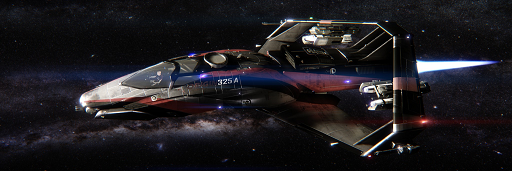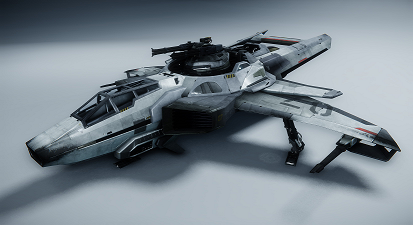Acceleration
Acceleration is the rate at which an
object's velocity changes over time. Without
acceleration, life would suck. Because the people making
Star Citizen are determined not to have their game suck,
they've given each ship their own maximum velocity and
acceleration. Each ship also has an afterburner mode,
which sharply increases its acceleration. So let's take
a look at those!
The 325a
 |
| 325a
Image Location |
I ran some tests, and came up with a table of data for how fast the 325a gets up to its 220 m/s.
| t(s),
without afterburner |
t(s), with
afterburner |
| 4.6 |
1.6 |
| 4.9 |
1.7 |
| 4.7 |
1.8 |
| 4.7 | 1.7 |
| 4.6 | 1.8 |
Our average times to reach maximum velocity came out to 4.7 seconds without the afterburner, then 1.7 with the afterburner. With the afterburner, the 325a accelerated 2.76 times faster.
Now that we have our velocities and times, we can calculate the acceleration!
Without the afterburner, we have that
Then, with the afterburner, we get
Interesting note, and a nice sanity check to make sure the values came out correctly, is that our 47 multiplied by our ratio of 2.76 times faster does actually give an acceleration of 130!
The next question that I asked, was 'this is very good and all, but how far does it travel while speeding up?'. If you're in a crowded area, and need to leave, knowing how far you have to travel to get up to speed might be very important! Fortunately, we have our kinematic equations to save the day!
If we let our initial position and velocity both equal zero, we know that our distance traveled in the forwards (we'll call it x) direction is equal to (1/2)at^2.
For without the afterburner, that equation tells us that we will travel 519 meters before we're up to our max speed.
With the afterburner, though, we get a much shorter 188 meters before we're cruising along.
If we do our sanity check again, and multiple the 188m by 2.76, we do get 519m! Huzzah for consistency!
The Hornet
 |
| Hornet
Image Location |
The Hornet has long been the navy's
front line fighter. Able to take a beating, and dish
it out with abandon. No where near as sleek and
attractive as the 325a, a fully armed Hornet can
ruin anyone's day. So let's run tests on it too!
The Hornet's maximum speed is a lower 200m/s.
| t(s),
without afterburner |
t(s), with
afterburner |
| 5.5 |
2.1 |
| 5.6 | 2.2 |
| 5.6 | 2.1 |
| 5.5 | 2.3 |
| 5.6 | 2.2 |
Our average times to reach
maximum velocity came out to 5.56 seconds without
the afterburner, then 2.18 with the afterburner.
With the afterburner, the Hornet accelerated 2.55
times faster.
Using the same formulae above, we get that the acceleration
of the hornet is:
Without the afterburner: 36m/s^2
With the afterburner: 92m/s^2
Using our same sanity check, 36(2.55) does come out
to 92 m/s^2!
But how much space does the
Hornet take, compared to the 325a? Those same
kinematic equations with our new variables tell us
that it takes:
Without the afterburner: 556.5m
With the afterburner: 218.6m
Sanity check again tells us that these are
consistent.
As expected, the Hornet does have
a lower acceleration than the 325a, and as such,
does take more straight space to speed up.
 |
 |
 |